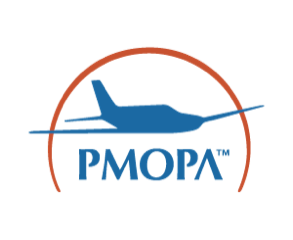Safety Management Systems (SMS) Scaled for Owner-Flown OperationsSafety Management Systems (SMS) has played a significant role in reducing accidents and incidents across industries and has proven effective in aviation, when adopted by the military, airlines, and corporate operators. Creating and implementing an SMS and developing a Safety Culture in owner-flown operations is a key strategy towards our goal of zero fatal accidents in the Piper PA-46 community. An SMS that has shared commitment from the aircraft owner/pilots and the Owner Pilot Association (OPA) can be implemented with the following approach and based on the Four Pillars of SMS: Safety Policy; Safety Risk Management; Safety Assurance; Safety Promotion. For an SMS to have tangible value and reduce accidents and incidents, it must include robust elements that drive safety. Yet for owner-flown operations, it cannot be so complex that it is perceived as burdensome and is designed to fail. It also cannot be oversimplified, therefore, lacking data that drives safety decisions or lacking the development of a safety culture. Existing aviation SMS programs are designed for larger entities requiring significant investment and ongoing resources, or they are too lean and do not deliver the true potential of SMS. Leveraging the OPA, through staff and volunteer efforts to create and foster the SMS, and through owner-pilot efforts to engage in the SMS, can bridge this gap and reduce the frequency of accidents and incidents we are experiencing today. Safety PolicyFAA Guidance: Establishes senior management's commitment to continually improve safety; defines the methods, processes, and organizational structure needed to meet safety goals. In an owner-flown scenario, the concept of “senior management” is best structured as a shared responsibility between the aircraft owner/pilot and the OPA, as the OPA has no direct influence on the aircraft operation or the aircraft owner’s commitment to safety.
PMOPA’s Safety Policy will be jointly signed by the PMOPA President and each aircraft owner participating in PMOPA’s SMS program. The OPA establishes our safety values, expectations of program participants, safety commitments/objectives/goals that will be measured under Safety Assurance, and allocates resources to facilitate the SMS program. This includes planning and preparing for emergency situations, including the development of emergency response procedures, training for emergency response teams, and regular testing of emergency response plans.
Safety Risk ManagementFAA Guidance: Determines the need for, and adequacy of, new or revised risk controls based on the assessment of acceptable risk1. PMOPA and its Safety Committee will identify common hazards, risks and mitigation strategies applicable to general aviation and Piper PA-46 aircraft in particular. A hazard is a condition that exists (e.g., a mountainous airport). The hazard can present a risk to the aircraft operator (e.g., Controlled Flight Into Terrain). Risks are evaluated on the basis of two dimensions: 1) probability of it occurring; 2) the severity, if it occurs. In this construct, owners/pilots participating identify hazards and risks and the PMOPA Safety Committee will then categorize them, reflect the probability and severity of the hazards and risks, rank them, and prioritize efforts. Hazard and risk reporting must be streamlined and simplified to encourage reporting. One cornerstone of an effective SMS program is confidentiality. Any safety-related data shall be protected from inappropriate use. Additionally,
Safety AssuranceFAA Guidance: Evaluates the continued effectiveness of implemented risk control strategies; supports the identification of new hazards1. PMOPA’s SMS program will need to be able to measure objectives and provide targets represented as:
To audit our processes on a continuous basis (e.g., were what we identified as our safety objectives the right ones? Did we make a measurable improvement in our Safety Performance Indicators?)
Safety PromotionFAA Guidance: Includes training, communication, and other actions to create a positive safety culture within all levels of the workforce1. PMOPA’s workforce is its Safety Committee and the individual owners/pilots. In addition to developing training programs that are relevant to the safe operation of Piper PA-46 aircraft, this includes generalized training about SMS, hazard and risk reporting, evaluation and mitigation.
|

